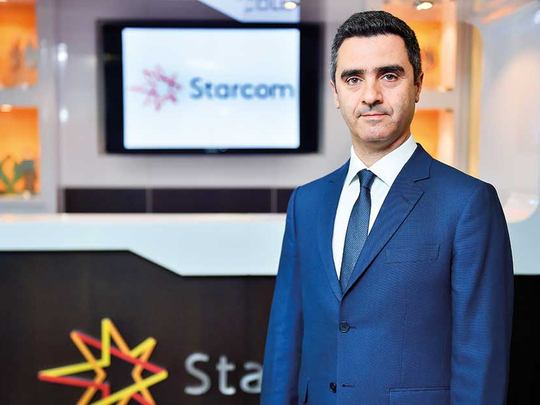
Dubai: Advertisers in the Middle East are now demanding the strictest compliance from websites and their publishers on where their ads show up. The build up of such pressure could push more web publishers to sign up for third-party checks of their websites to ensure they are doing their part in protecting a brand’s image.
The issue bubbled up to the surface after a spate of incidents in Europe involving digital ads that showed up alongside content deemed inappropriate by the brand owners. Leading advertisers and agencies pulled out ads from sites such as YouTube in response and demanded better checks and balances.
According to a top ad industry official, it’s not a problem exclusive to advertising markets elsewhere. “The challenge exists to anyone who has access to content on different platforms,” said Tarek Daouk, CEO of Starcom, the media buying powerhouse that is part of Publicis Group. “We are engaging with tech platforms in the region and seeing what they are doing to try and control brand safety as much as possible. And trying to understand how much of this can be controlled and what is acceptable for the industry.
“The discussions in the last three months happened in the Middle East in parallel with elsewhere and with the same seriousness as the global. There was no feeling that the concerns were not about us in the region.”
And is this a unified stance that the ad industry is taking on brand safety in the digital space? “I can confirm that we and our clients have taken the decisions together on such situations,” said Daouk. “I am not aware of an industry-wide approach. We are advising clients to take maximum possible measures for brand safety.
“In some cases, advertisers are satisfied. Some others want more assurance.”
While there have always been filters in place that will stop brand ads showing up on sites spewing hatred or pornography, it is far from being an exact science. And there is always a difference in perception about what be suitable in a western society may be unpalatable in the Middle East. Brands, then, have to walk a very fine line in only getting to be seen on digital platforms/content that are in sync with the wider society.
“We are not talking about a totally uncontrollable situation,” said Daouk. “There are ways to block certain content, and the big players have responded by making changes to the systems to try and control as much as possible. We engaged immediately with them, the tech platforms and web publishers.
“Can the algorithms and available technology be able to block 100 per cent? If not, what is the acceptable risk factor for advertisers. So far, no one has an absolute answer. But it’s being worked on.”
So far, the approach advertisers in the region have taken is not to penalise anyone. Rather, they are pushing for independent monitoring. Daouk believes this stands a decent chance of doing the needful.
“There are tools to monitor digital ad verifications — as such it’s not something new,” he added. “What’s required is for web publishers in the region to allow third-party monitoring. And especially in cases where the manual work is extremely difficult.
“These monitors are available in the Middle East and we need to empower them. The multinationals are having the same discussions elsewhere. Third-party verification, third-party monitoring and third party reporting is absolutely critical.
“The momentum had started before, with verification... but it’s speeding up now. But the available technology alone cannot block 100 per cent. There has to be a combination of tech and the human interface to do the needful.”
Even without increased scrutiny, the region’s digital ad marketplace is on the cusp of major changes. The rate of growth in ad spending in the first-half of this decade has started to slow down. According to Daouk, it has been visible for more than 18 months and did not suddenly show up in the last quarter or two.
The broader ad spending patterns too remain weak. “Our forecast for 2017 is for a 9 per cent drop in total spend and that’s after the 10 per cent drop in 2016,” the CEO said. “But in 2018, the drop should decline to 3-4 per cent and 2019 should see further stabilising.
“But decisions such as the one taken in Saudi Arabia about issuing bonuses will be a net positive for the region, if it means more disposable incomes. But the bigger question is when will the bonuses come through and when will the higher consumer spending start as a consequence.”











